From a Dalek among the Science Museum ticket desks to departure boards offering quick jaunts to Tatooine, it’s fair to say that the experience of Science Fiction: Voyage to the Edge of Imagination begins even before stepping through the shuttle doors on to the research spacecraft, the Azimuth.
Celebrating the story-telling of this genre, the exhibition places visitors at the heart of an interactive science fiction story. In the shuttle, ALANN offers a quick debrief of the mission’s parameters – nothing too big, just to find out what it means to be human.
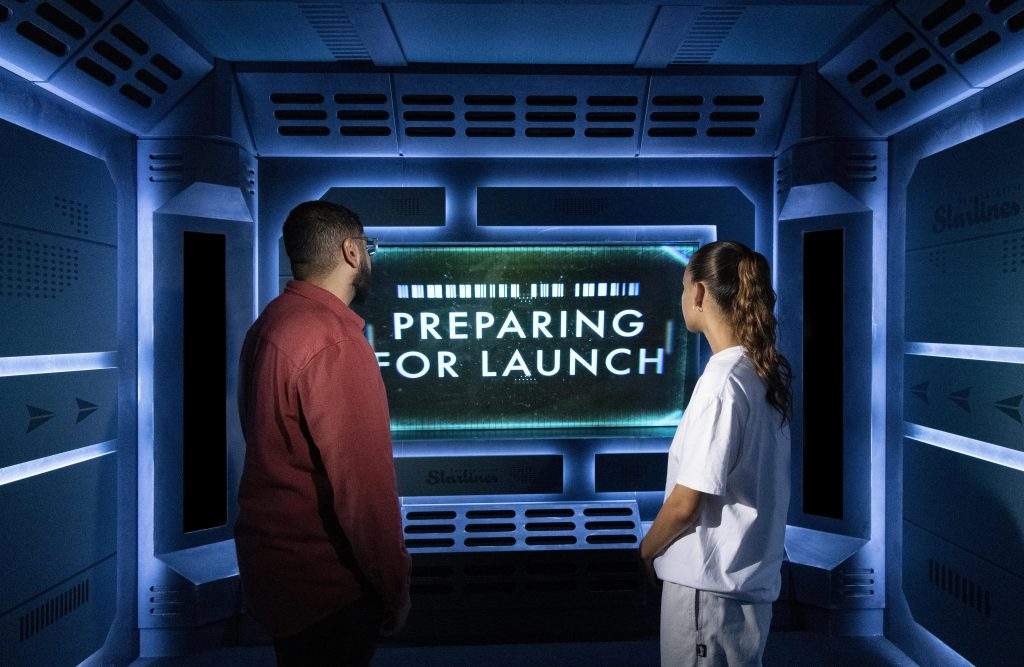
The Exploration Deck delves into the drive to journey beyond our world. A model of a NASA Saturn V rocket, which launched the Apollo missions that saw the first landing on the Moon, looks at a replica model of the U.S.S. Enterprise from Star Trek, signed by Nichelle Nichols and George Takei. A hypersleep chamber from Prometheus, which in the film allows the crew to travel across space by slowing down bodily functions in a state of stasis, is presented alongside torpor research by SpaceWorks who are studying if therapeutic hypothermia and sedation could be used for human missions to Mars. A radio telescope used by scientists at SETI in their attempts to detect intelligent life is in the line of fire of a looming Dalek. From the technology that has taken us into space – and might in the future take us further into it – to the intelligent life that we might encounter out there, it distils some of the fascinating connections between significant scientific innovations and celebrated science fiction works.
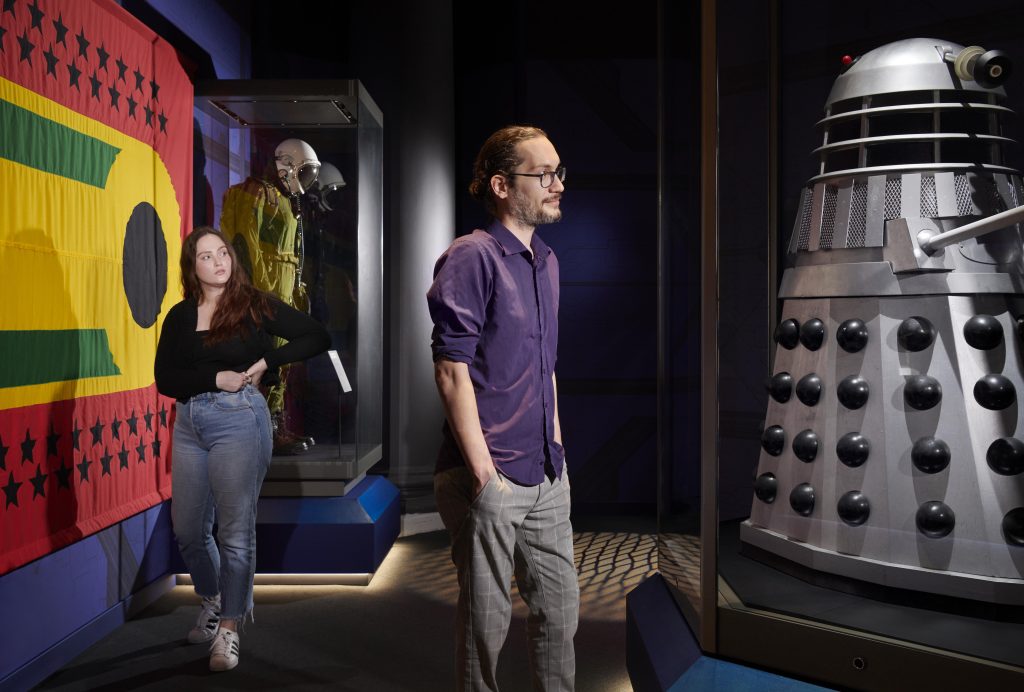
Iron Man’s armour and Darth Vader’s helmet, created for The Empire Strikes Back, stand welcome in the ship’s Bio Lab. The Bio Lab explores the evolution of human form, through cyborgism and gene editing, as well as how scientists have been inspired by the technological possibilities presented in science fiction. Incredible medical innovations are revealed, including prosthetic arms developed by Open Bionics, the smallest ever pacemaker – the Medtronic Micra – and the DxtER medical diagnostic unit, winner of the XPrize, inspired by the medical tricorder used in the Star Trek franchise.
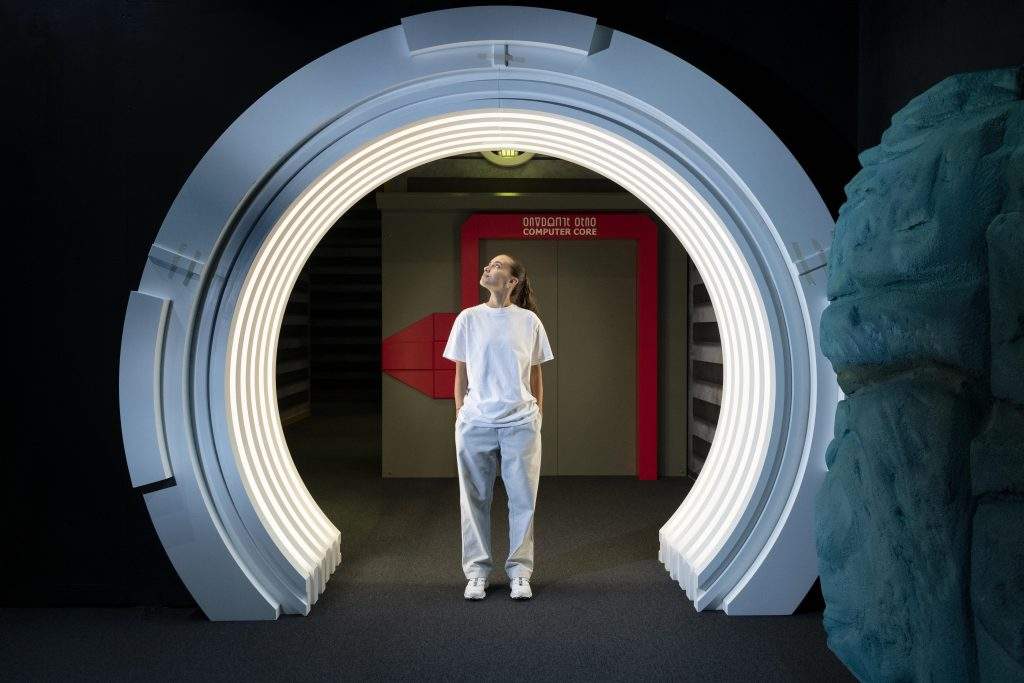
Then there’s an opportunity to travel another world where ALANN has detected signs of intelligent life. Communicating through a hive mind, a murmuration of bioluminescent creatures tracks and interacts with visitors to its home. This swarming kaleidoscope of colours scans those within its space and flits around to meet them.
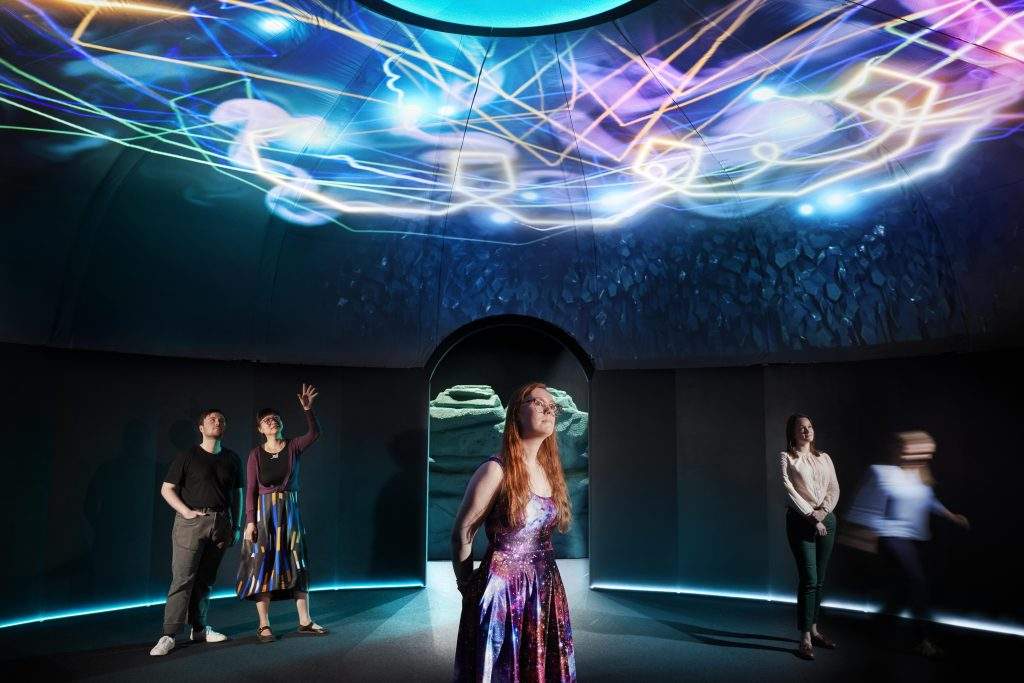
A wormhole jumpgate lands back on the Azimuth, then the Visualisation Deck is a chance to see how science fiction reflects contemporary societal concerns and challenges. A poignant metal urn from Hiroshima, distorted by the heat of an atomic blast, is displayed alongside a poster from the original Godzilla, highlighting how the development of nuclear weapons shaped post-war anxieties. A society depleted by water scarcity portrayed in Kenyan film Pumzi is shown in conversation with the food shortages and hardship illustrated in the graphic novel version of Octavia Butler’s Parable of the Sower and the first model of Abeer Seikaly’s climate refugee tent structure, which is inspired by the nomadic traditions of the Bedouin. Both science and science fiction offer hope that we may overcome or mitigate global challenges. The creativity inherent in the genre will be vital in finding solutions to the threats we face.
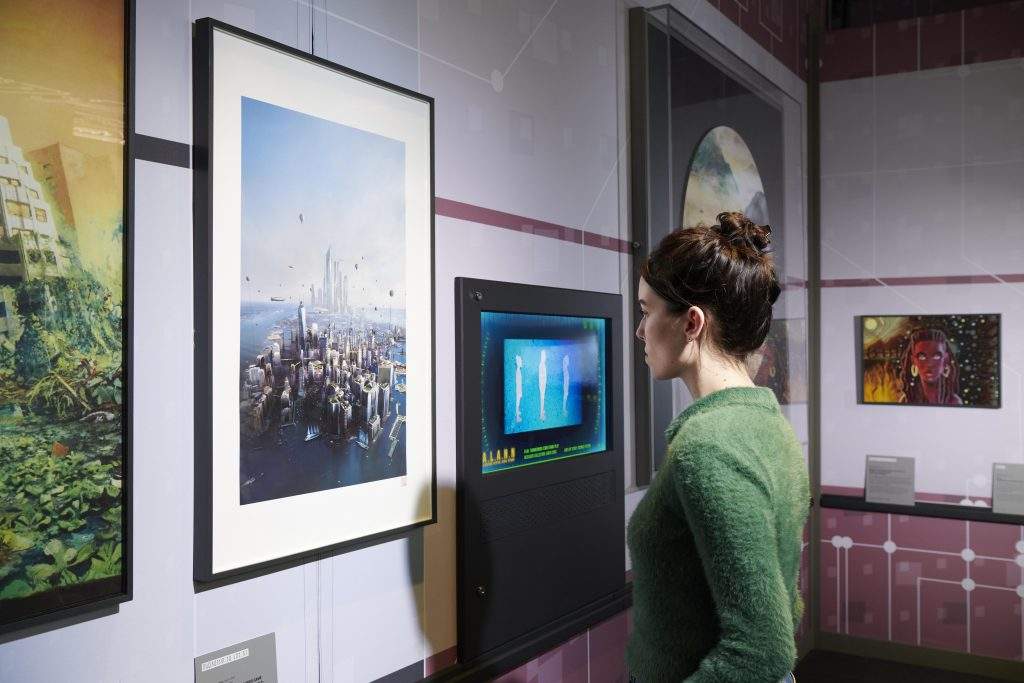
Before landing back in Exhibition Road, there is a window that overlooks Earth from the edges of our atmosphere in the Observation Deck. This is a quiet moment to reflect on our place in the universe. It is an opportunity to marvel at the scale of our world, the vastness of human imagination. It is a moment of hope.
The heart of the exhibition is science fictional thinking: using wild imagination to envision the impossible then working back, problem-solving, until it’s real and it’s possible to offer alternative futures for humanity.
Now tune in and hear more from our exhibition’s Lead Curator Dr. Glyn Morgan as he talks through an introduction to and the making of this exhibition:
Science Fiction: Voyage to the Edge of Imagination at the Science Museum until 20 August 2023. Book your tickets now
2 comments on “Introducing Science Fiction: Voyage to the Edge of Imagination”
Comments are closed.

is age 4 too young to do this
Hi Joanna,
Younger children can attend (those aged 7 and under go free) but the exhibition is aimed at a slightly older audience.
Hope that helps?